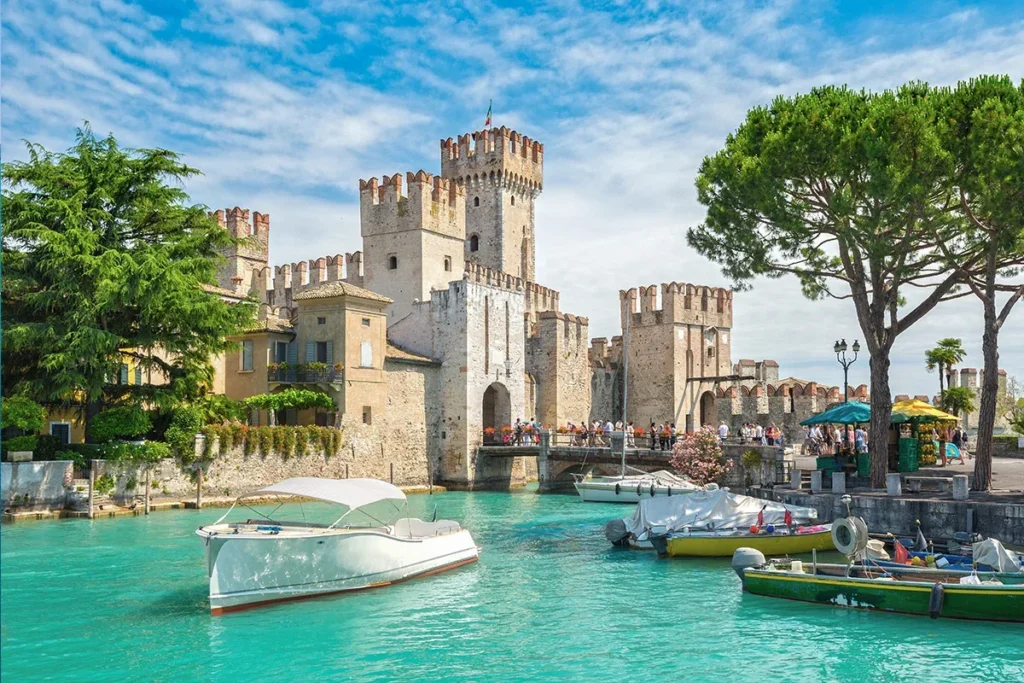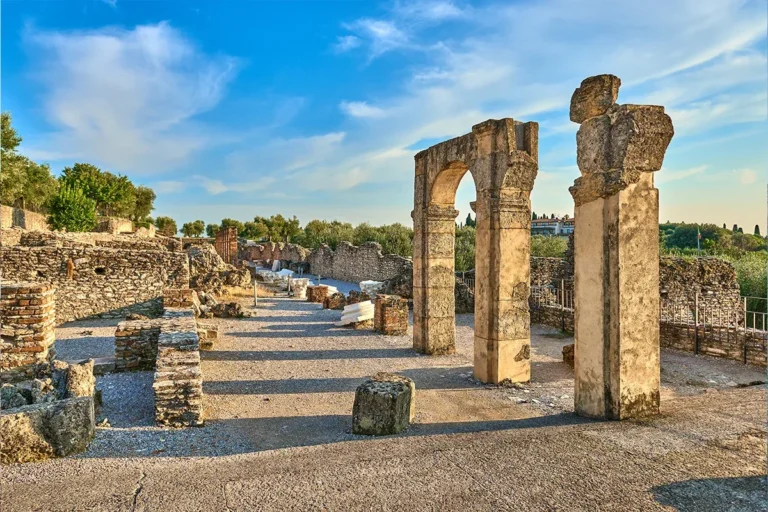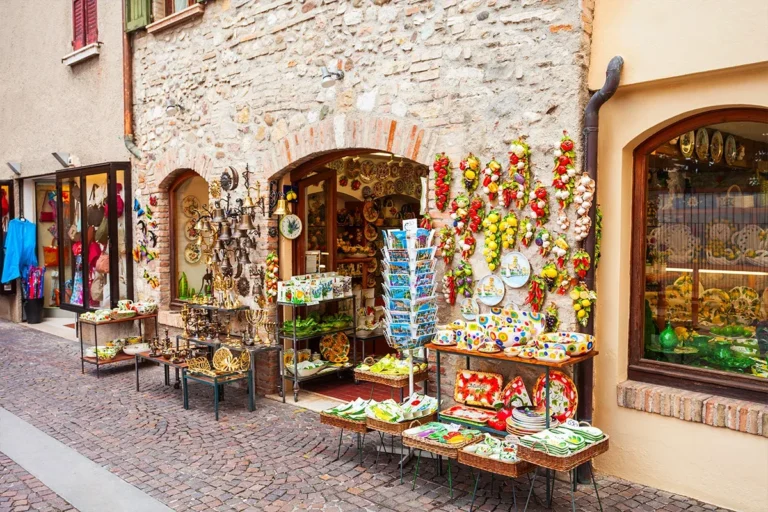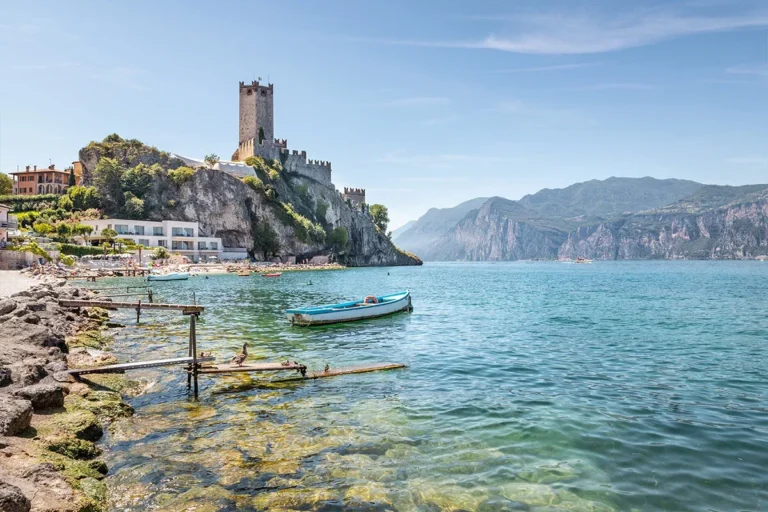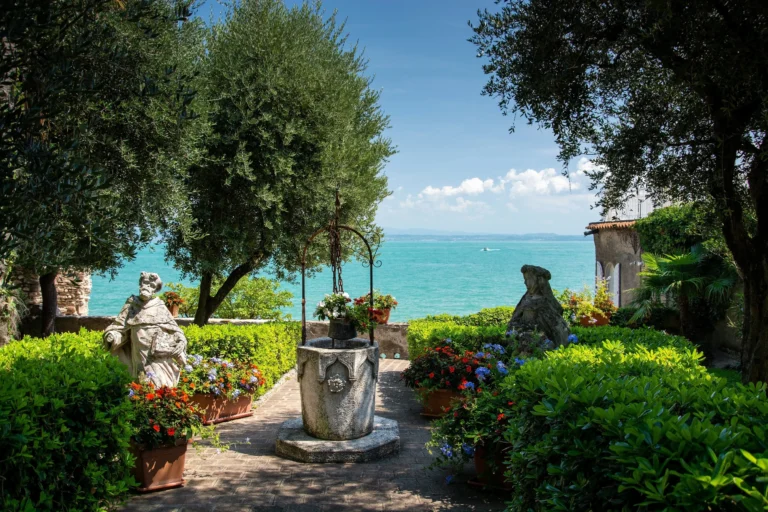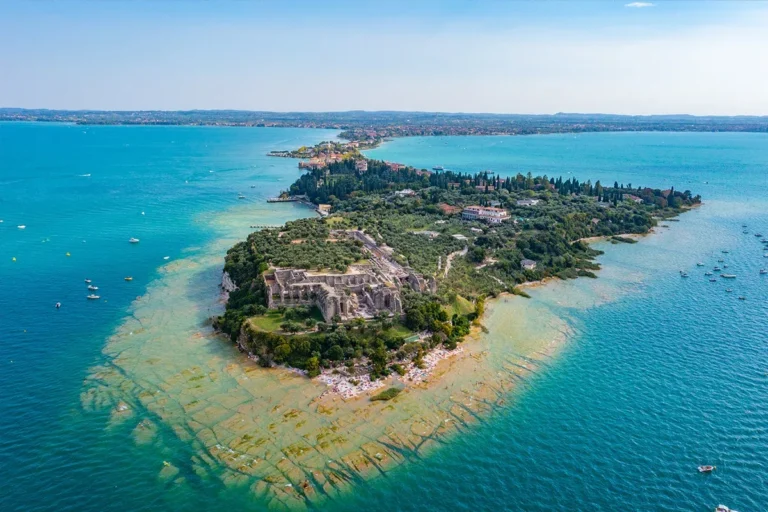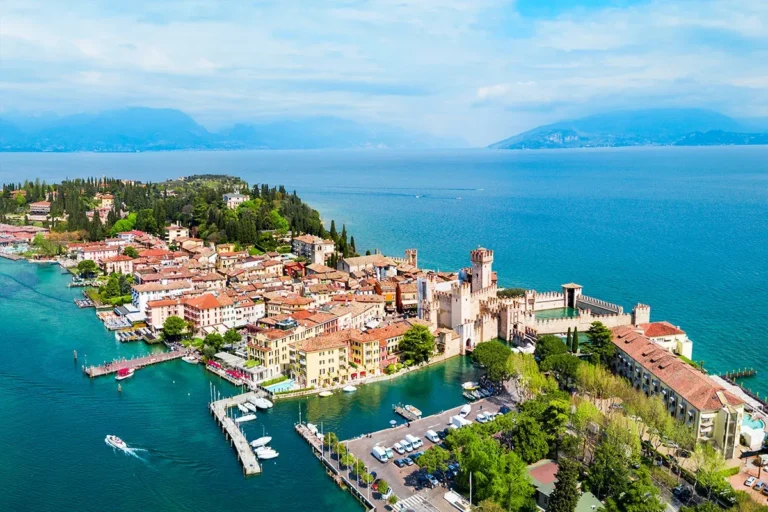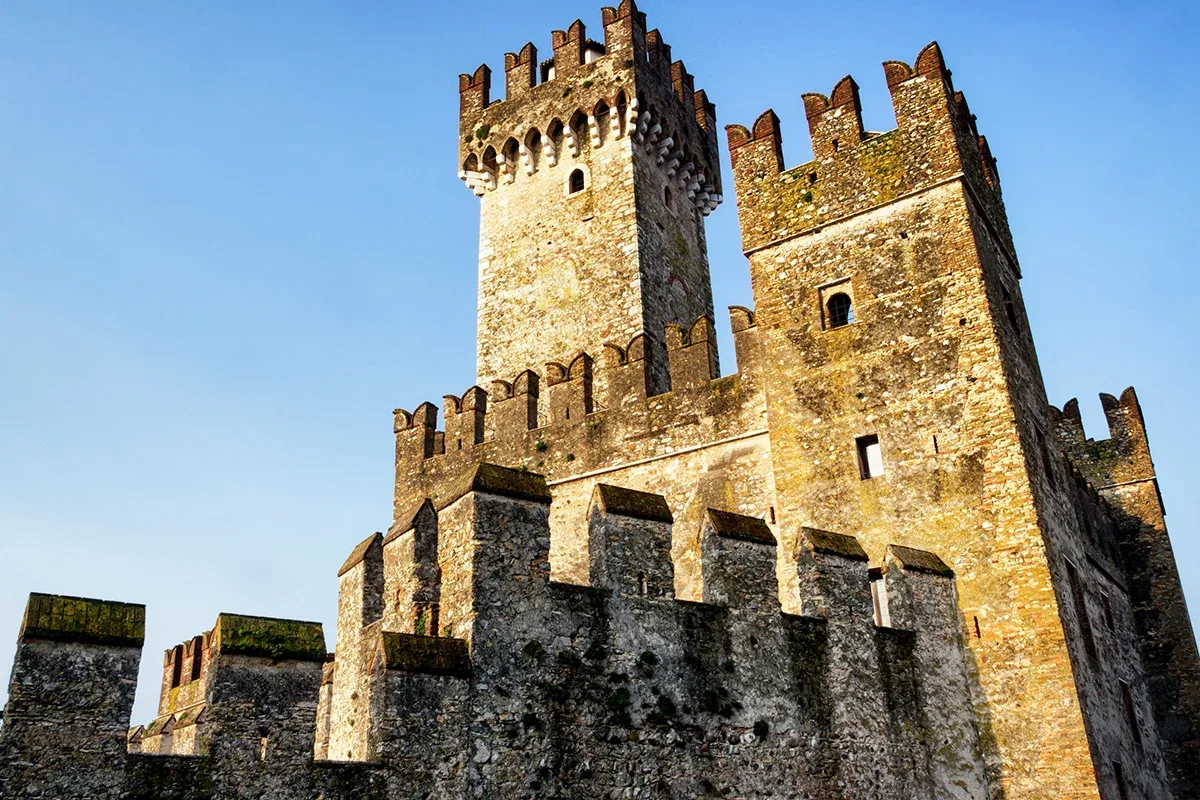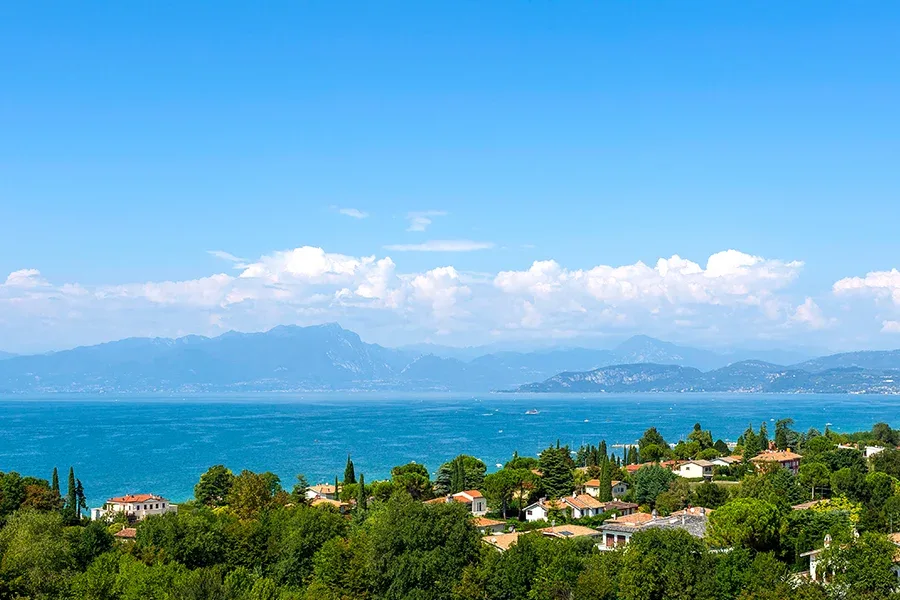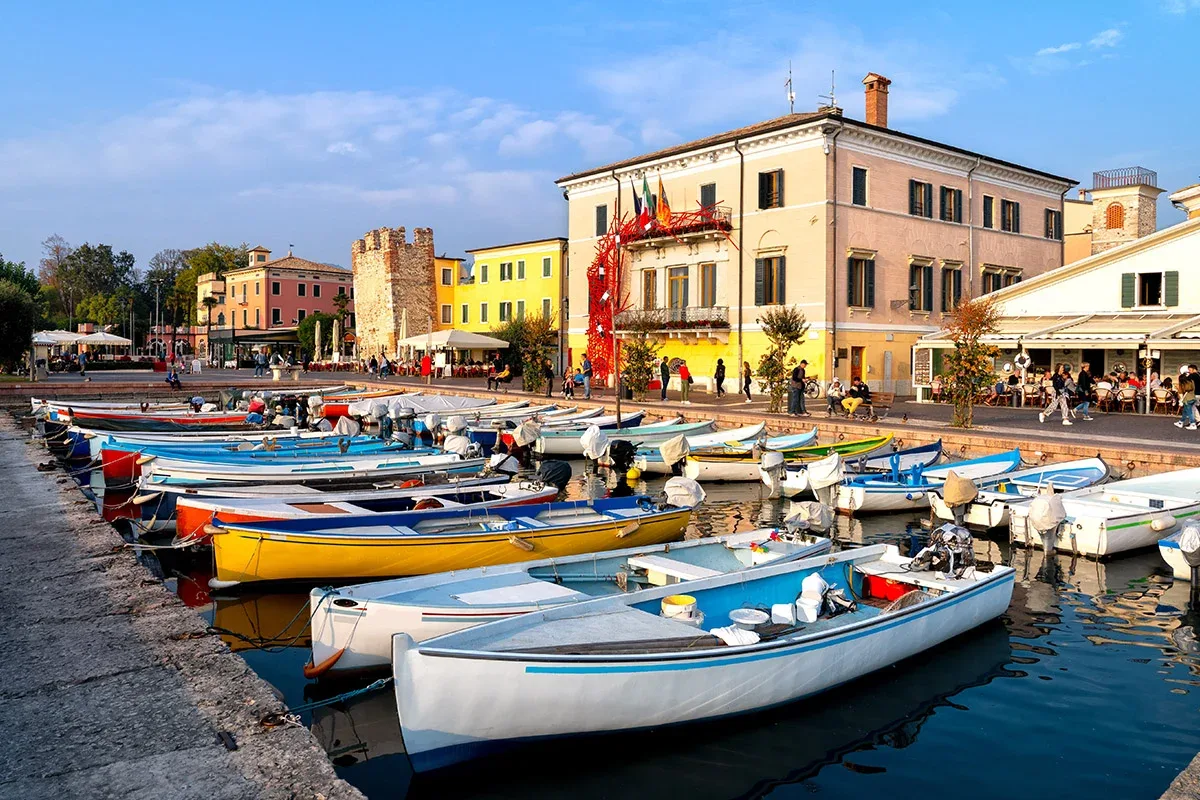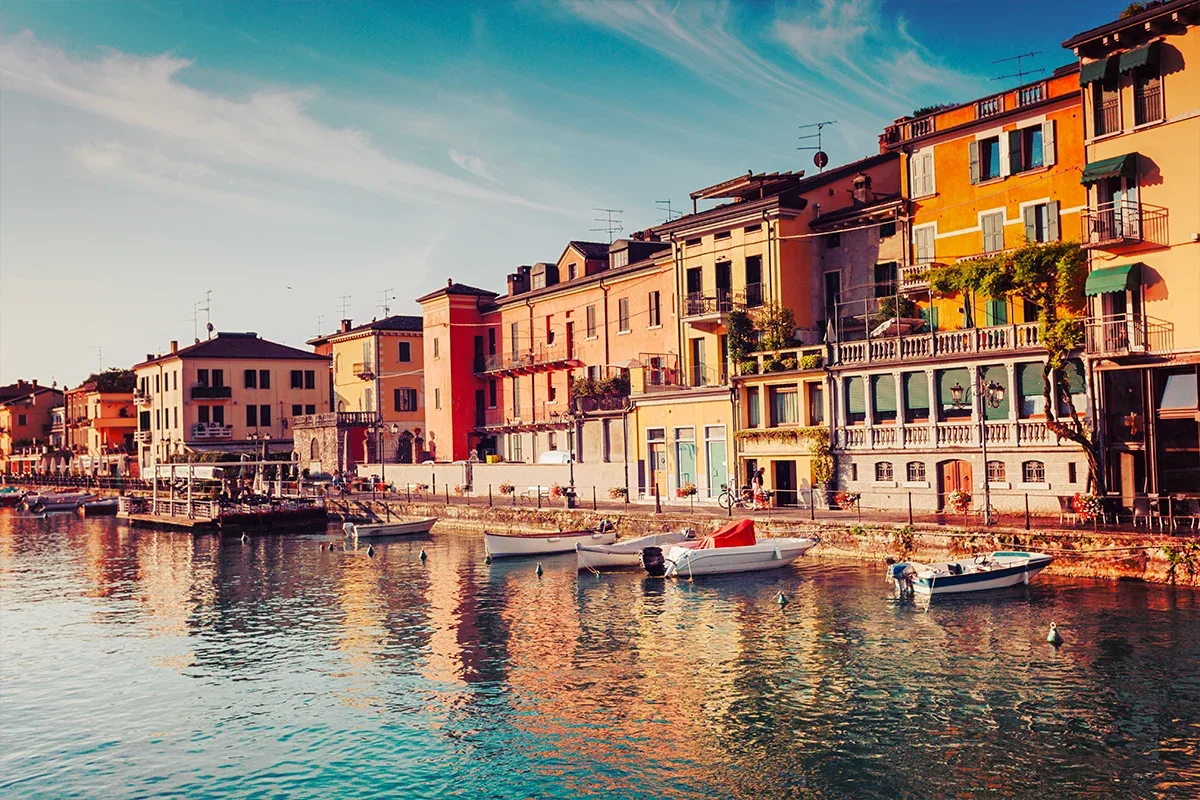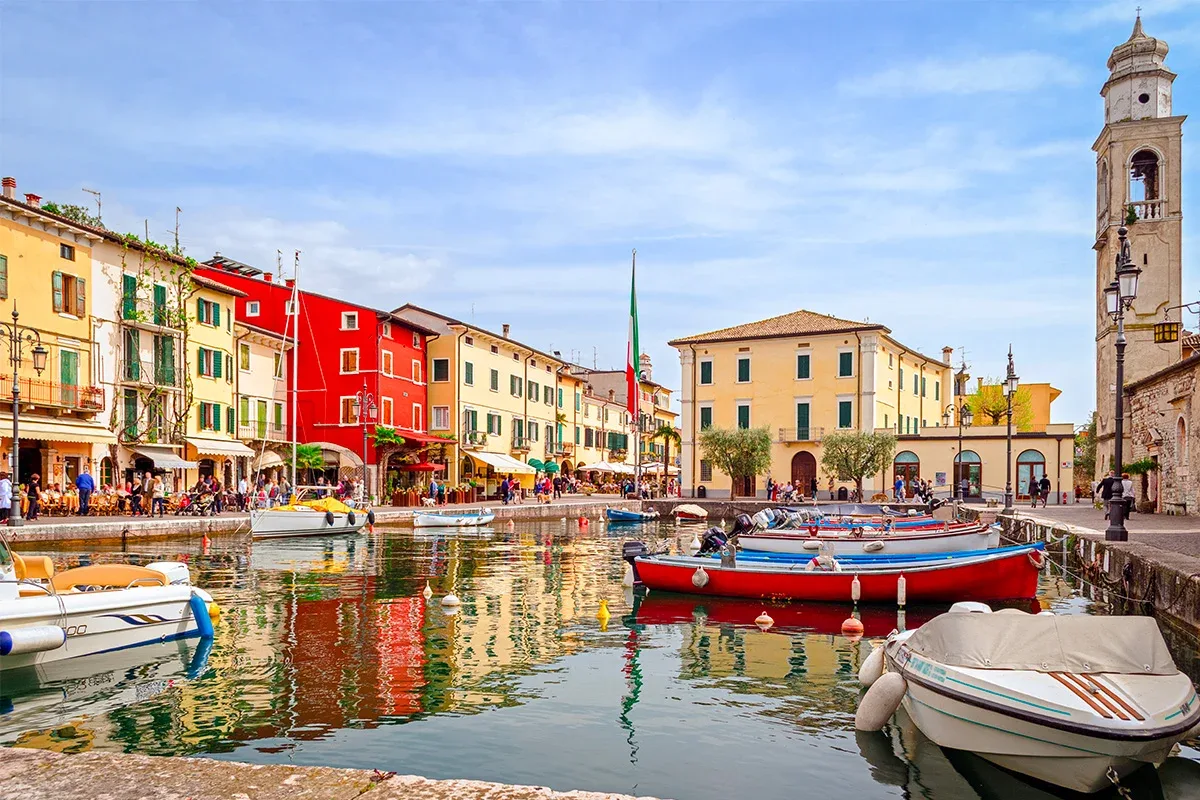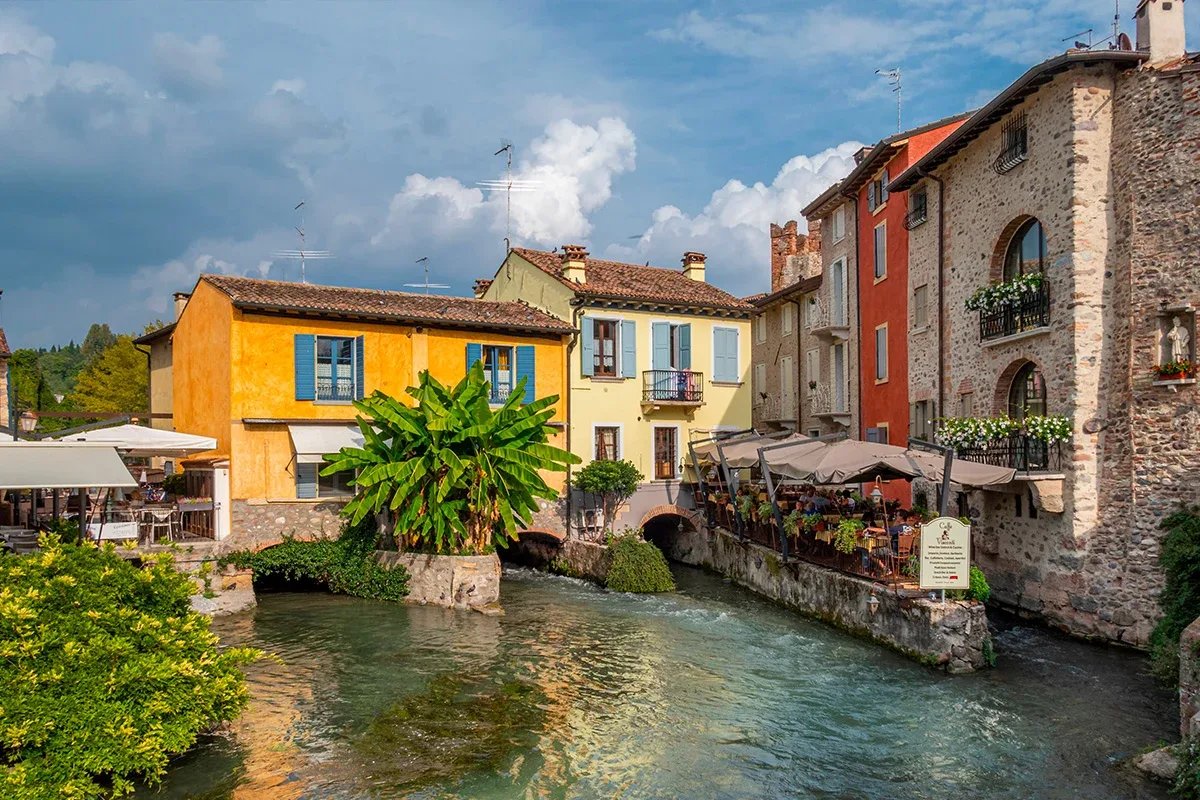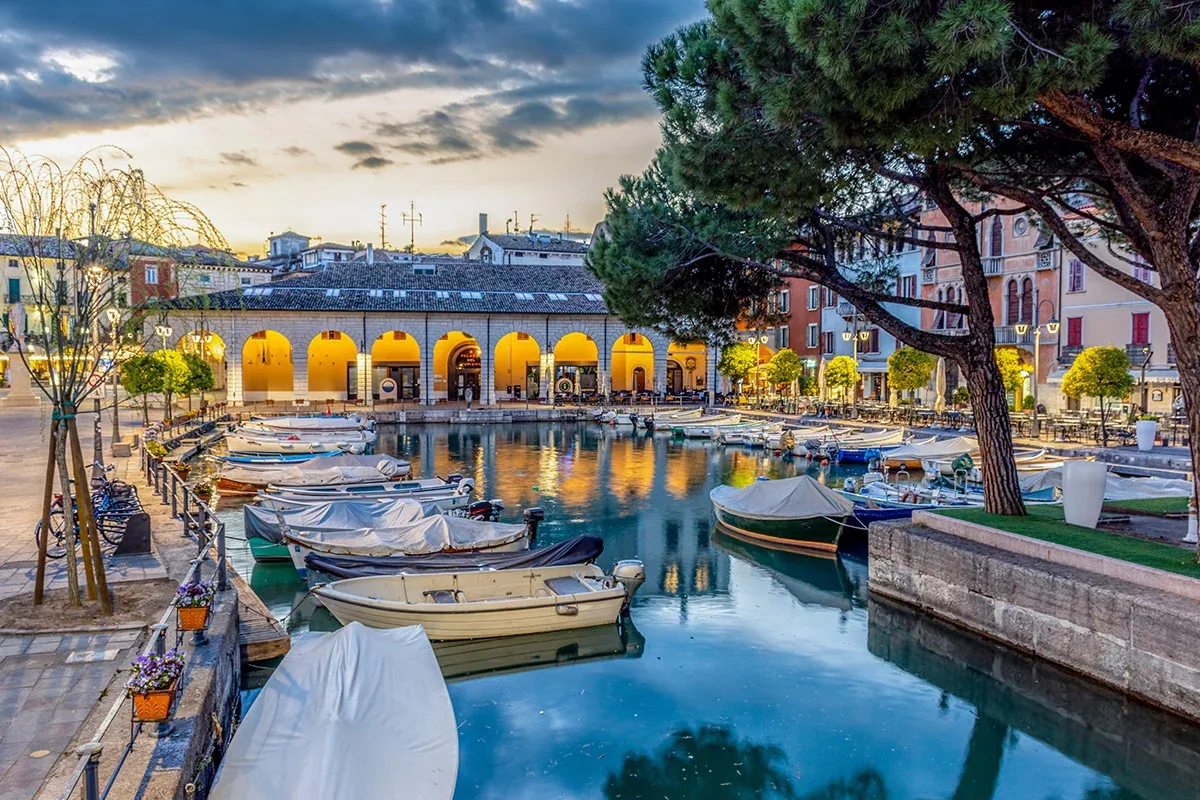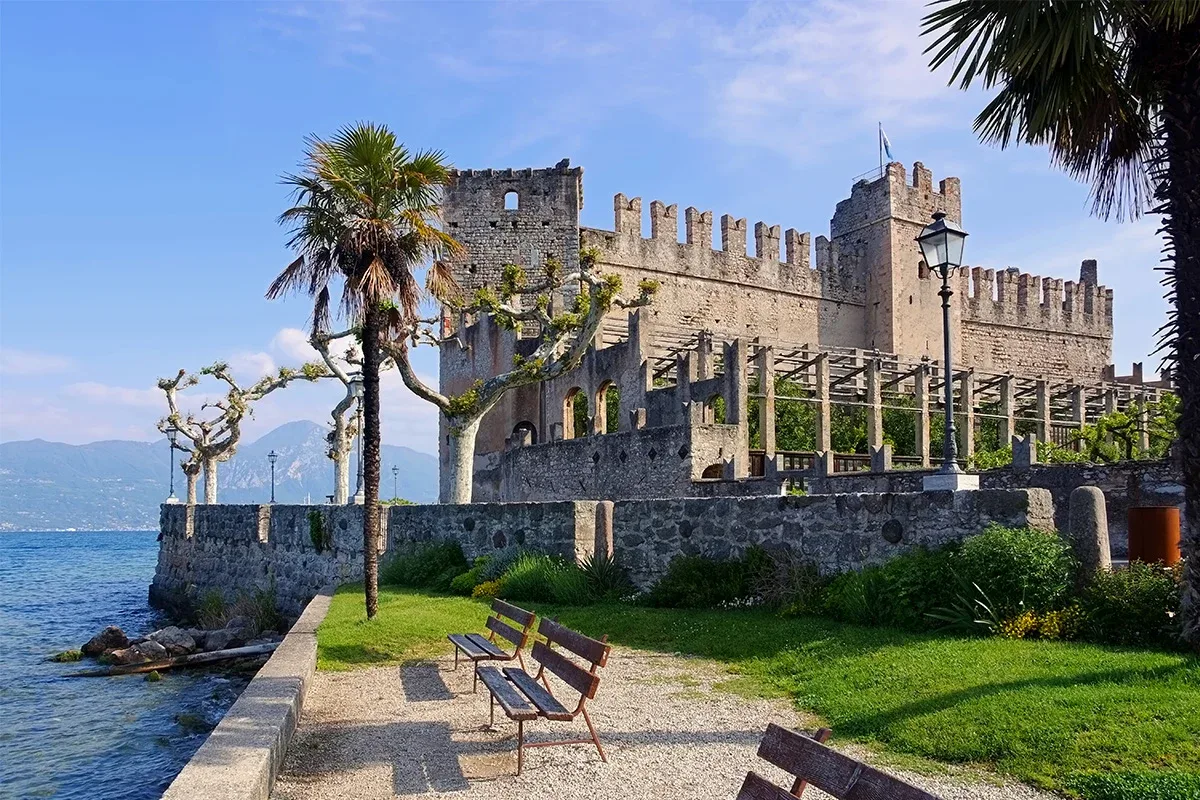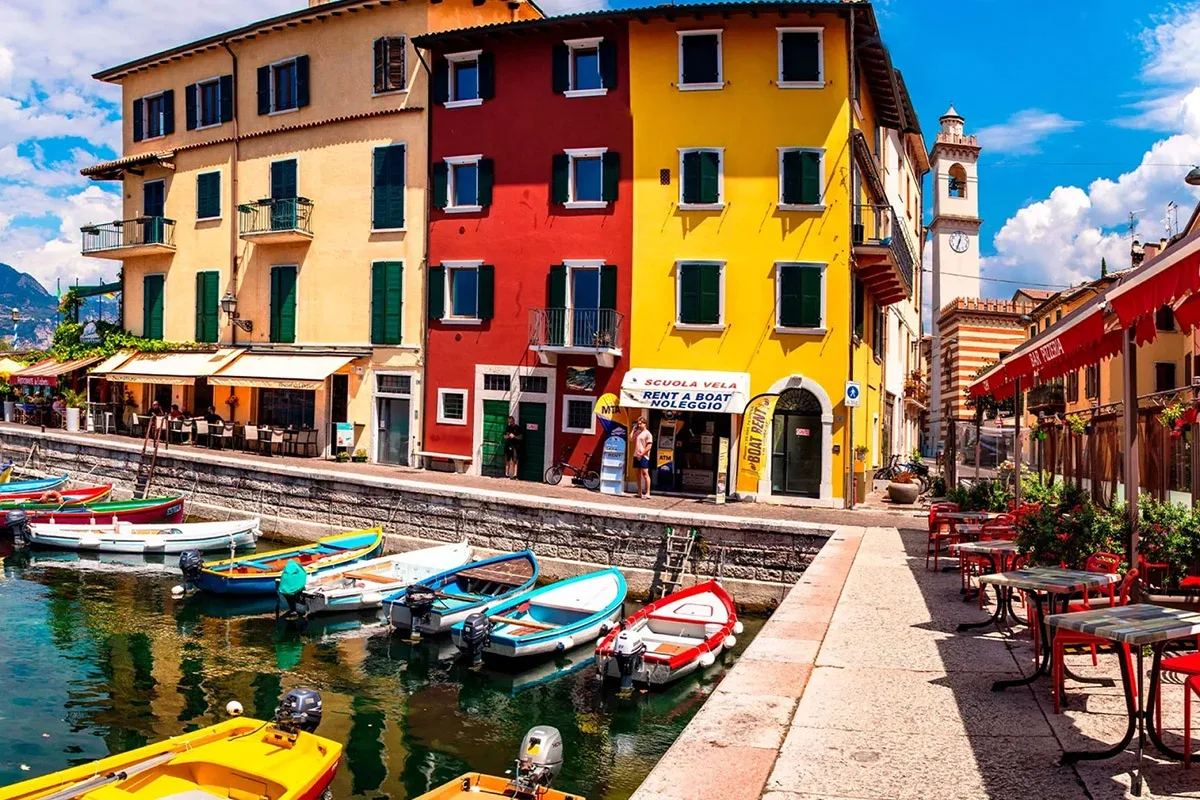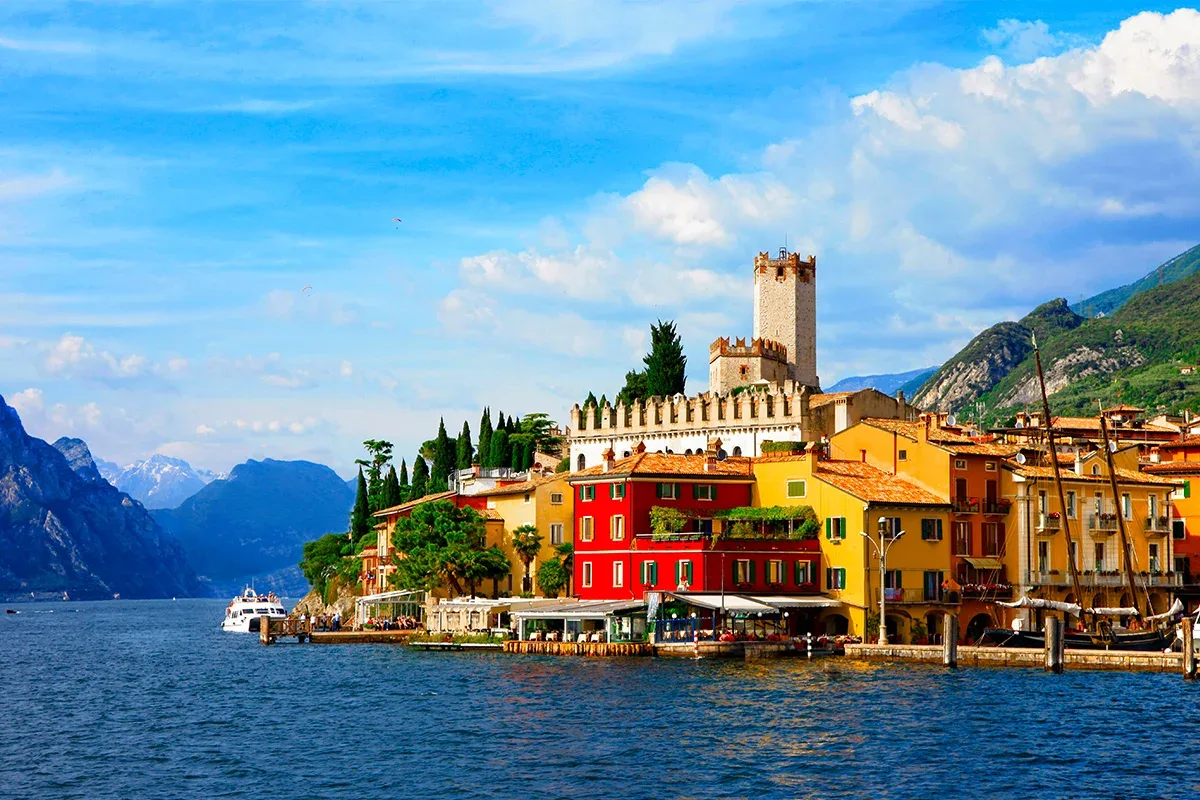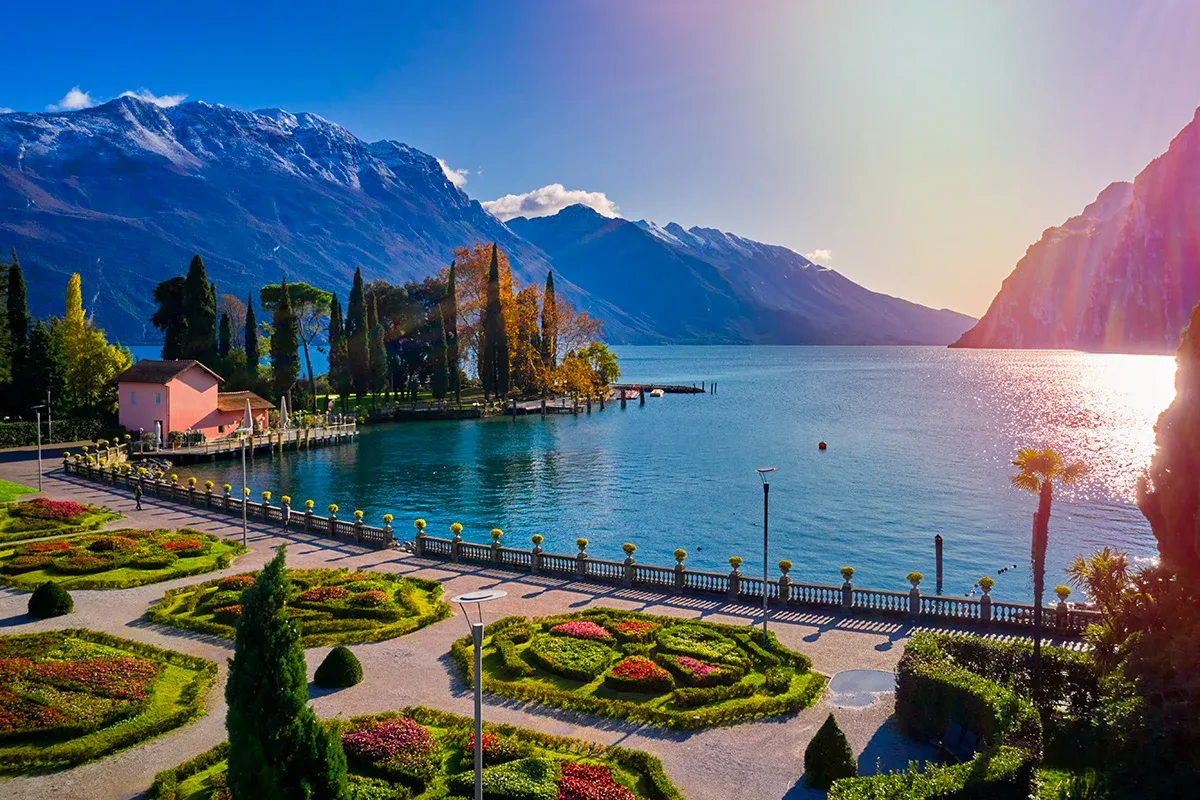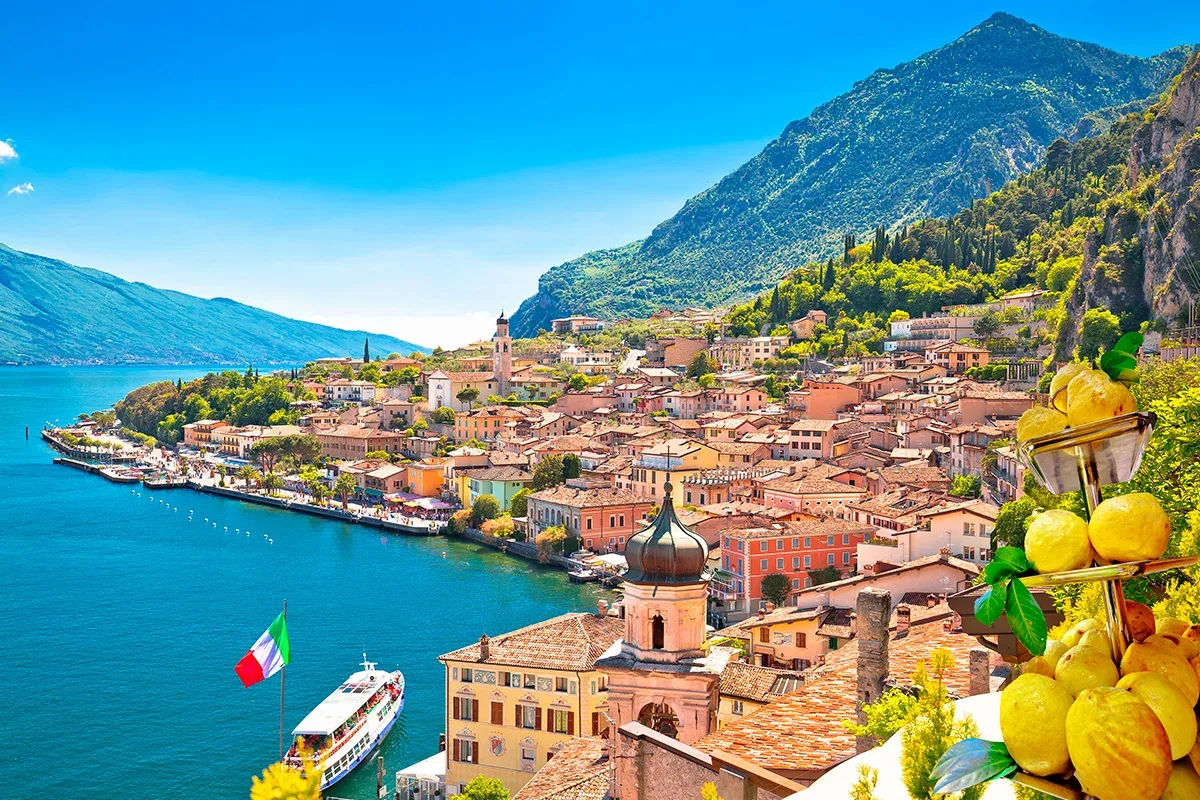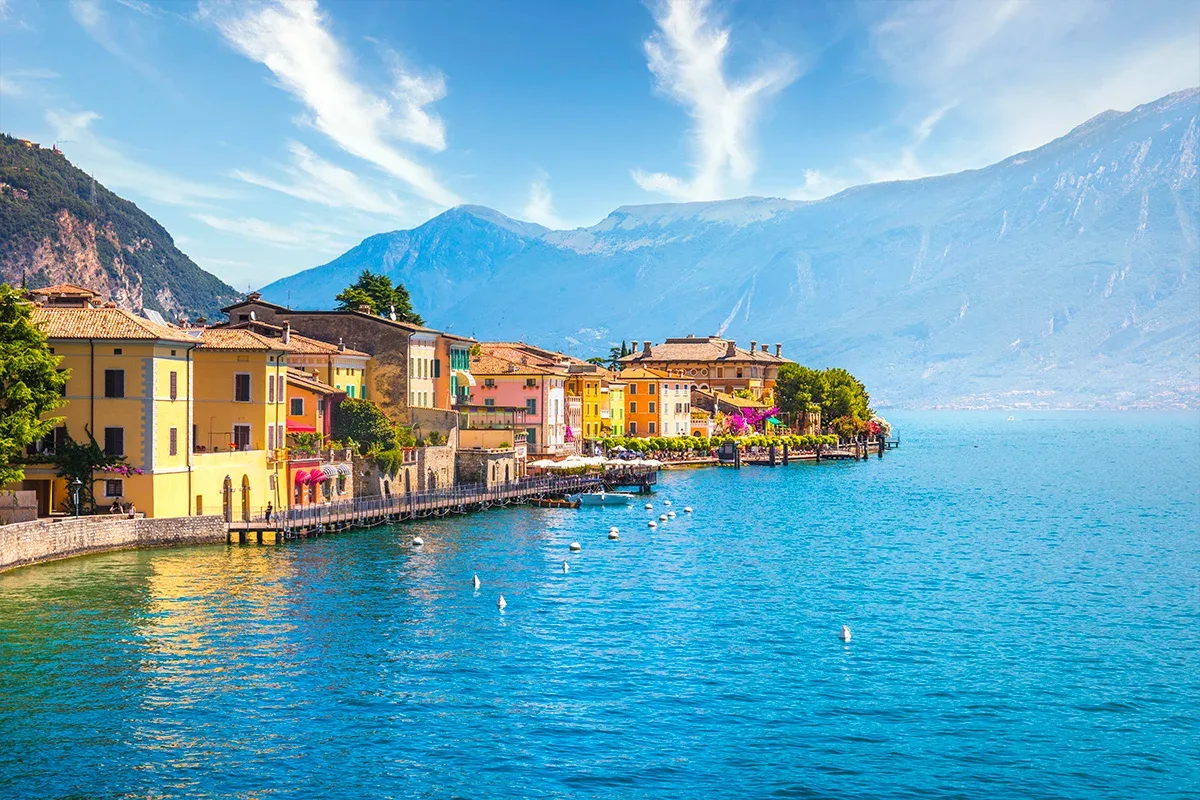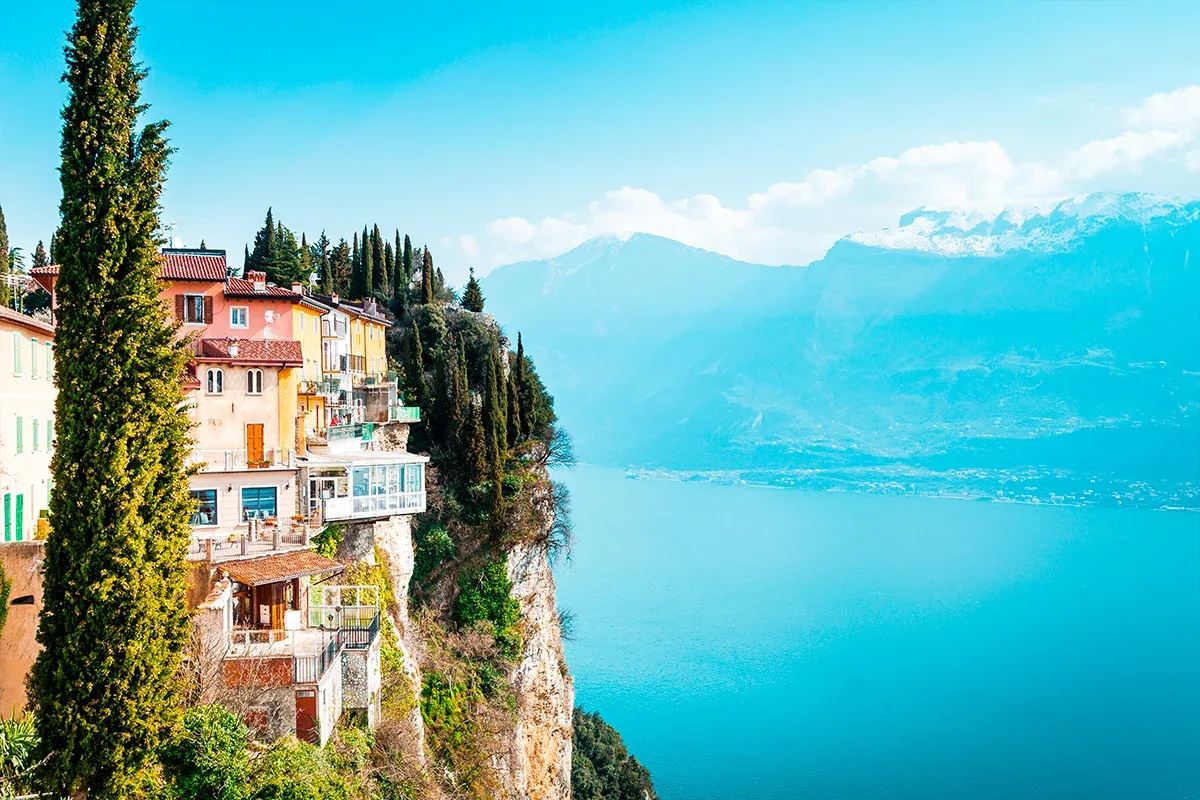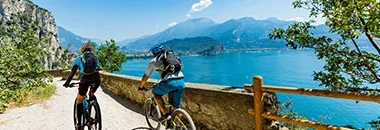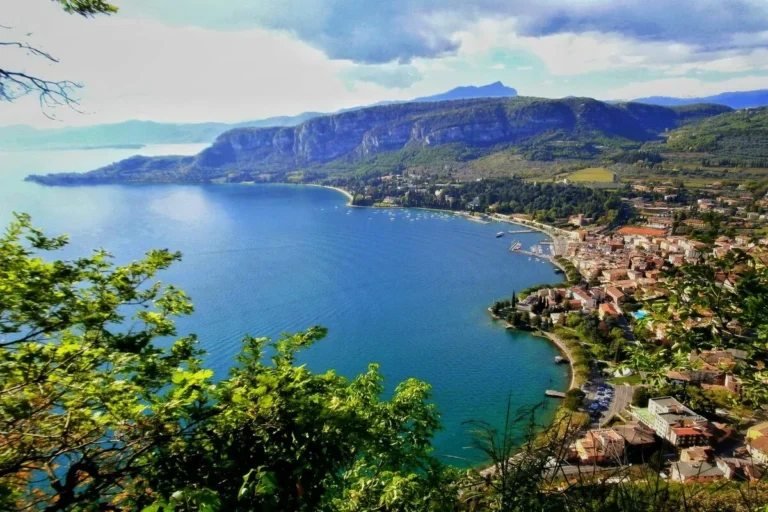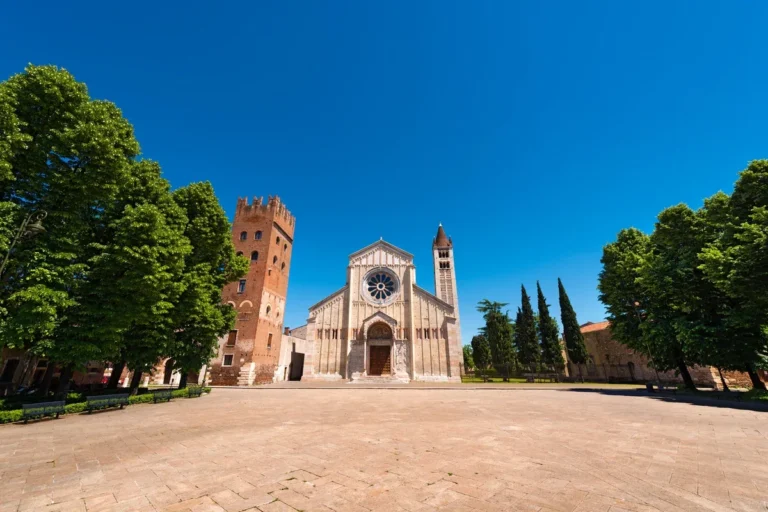The medieval castles, the ancient Roman ruins and crystal waters makes Sirmione a true epic movie setting. It’s one of those places that makes you want to pinch yourself to see if you’re really there. Nothing less, it’s stilts are recognized as UNESCO sites since 2011.
But it’s not all about the history. There are plenty of beaches and lakeside cafes, you can try some of the local delicacies like lake fish or gelato.
Sirmione is a peninsula that juts out into Lake Garda, creating a little island of tranquility. It’s like a mini-vacation within your vacation.
What to see in Sirmione
Sirmione offers a captivating blend of ancient history, natural beauty, and modern vibes. From the imposing Scaliger Castle, a medieval fortress that dominates the peninsula, to the romantic Grotte di Catullo, the ruins of a Roman villa, Sirmione’s historical sites transport visitors to bygone eras.
1. Grotte di Catullo and its gardens
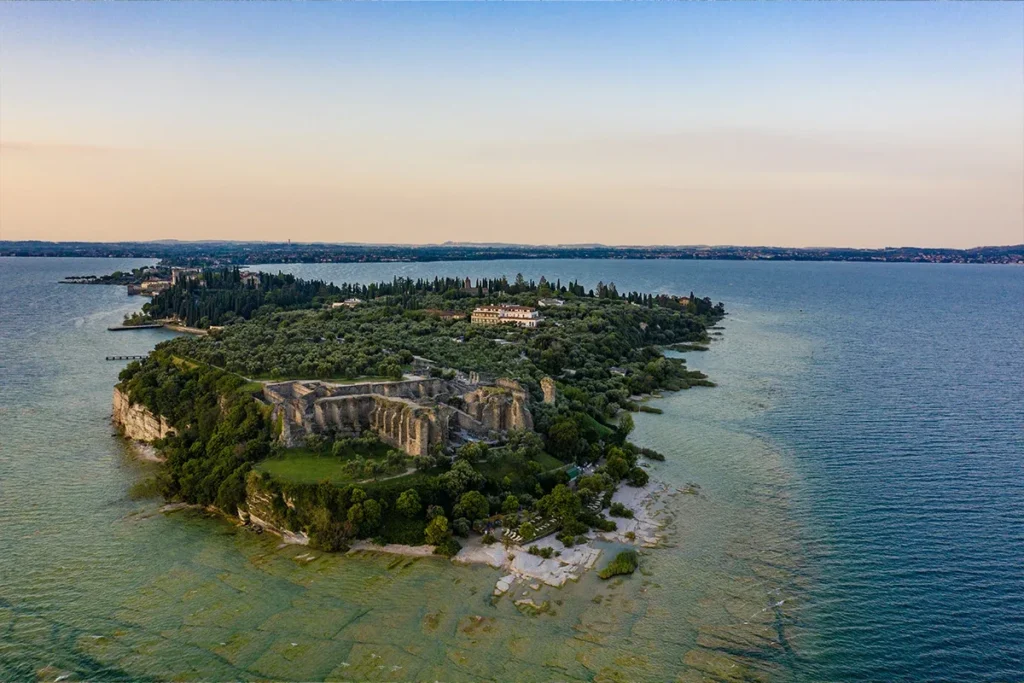
The Grotte di Catullo is believed to have belonged to the Roman poet Catullus. And while we can’t be 100% sure, it’s a pretty good guess considering the name. The villa is huge, with tons of rooms, courtyards, and even a theater. It’s like a mini-city, really.
But what’s really cool about the Grotte di Catullo is the location. It’s perched on a cliff overlooking Lake Garda. So, as you’re exploring the ruins, you’re also getting a front-row seat to one of the most beautiful lakes in Italy. It’s like a two-for-one deal.
The fact that the gardens once belonged to one of Rome’s most famous poets sounds pretty fancy, right? They are filled with beautiful flowers, ancient statues, and stunning views of Lake Garda. There’s even a reconstructed Roman villa that gives you a glimpse into what life might have been like back in the day.
➱ Check out the best experiences on Lake Garda
2. Scaliger Castle
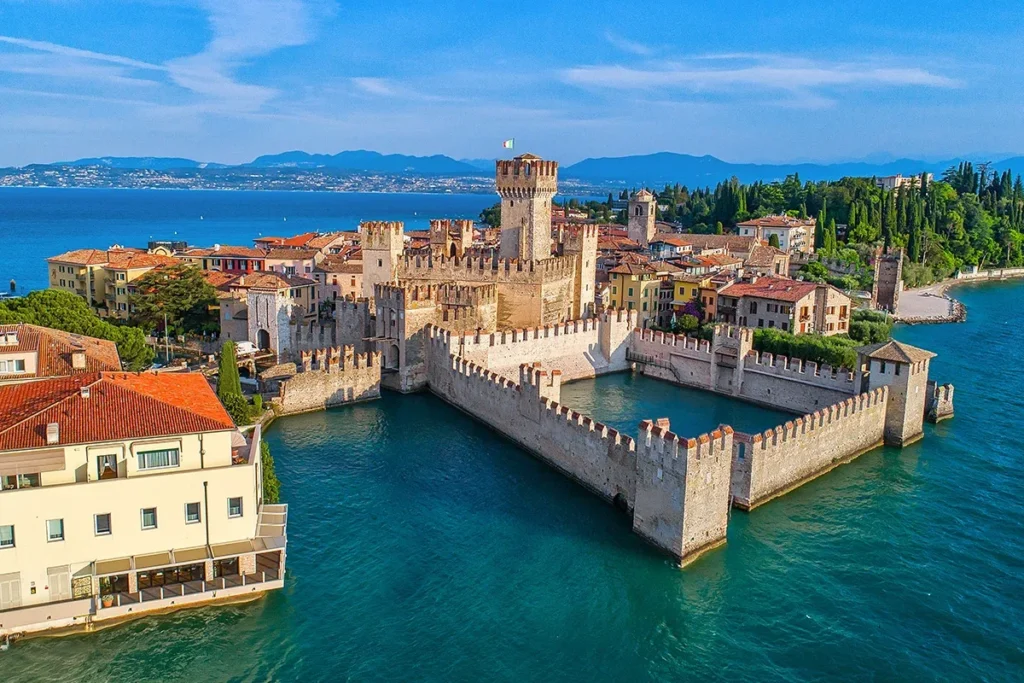
The thick stone walls, the towering turrets, and the ancient arches are the first things everyone notice. The Scaliger castle was built by the Scaliger family, who ruled Verona in the 13th and 14th centuries. It’s a masterpiece of military architecture.
I love exploring the castle’s winding staircases and hidden corners. There’s a museum inside that showcases the history of Sirmione and the Scaliger family. And if you can climb to the top of the castle’s tower for panoramic views of the lake.
If you’re visiting during peak tourist season, it’s advisable to purchase your tickets in advance to avoid long lines and potential sell-outs. If you plan to visit other attractions in Sirmione, inquire about combination tickets that may offer a discount.
3. Peninsula and historical center
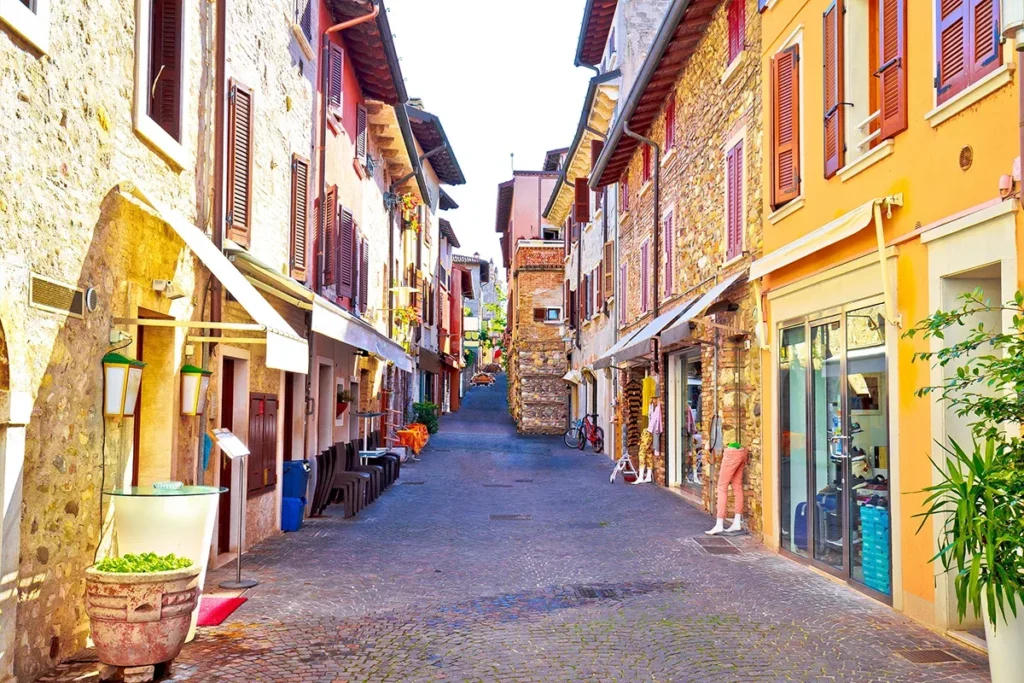
The Sirmione Peninsula has a rich and storied history that dates back centuries. As you wander through the narrow streets, you’ll stumble upon Roman ruins, medieval walls, and even a few hidden courtyards.
Due to its exceptional historical and cultural significance, the Sirmione Peninsula was declared a UNESCO World Heritage Site in 2011. This prestigious designation recognizes the peninsula’s outstanding universal value and its importance as a cultural and natural heritage for future generations.
The UNESCO World Heritage status has helped to preserve Sirmione’s heritage and promote its tourism industry. It also highlights the peninsula’s unique qualities and its contribution to the global cultural landscape.
4. Church of San Pietro in Mavino
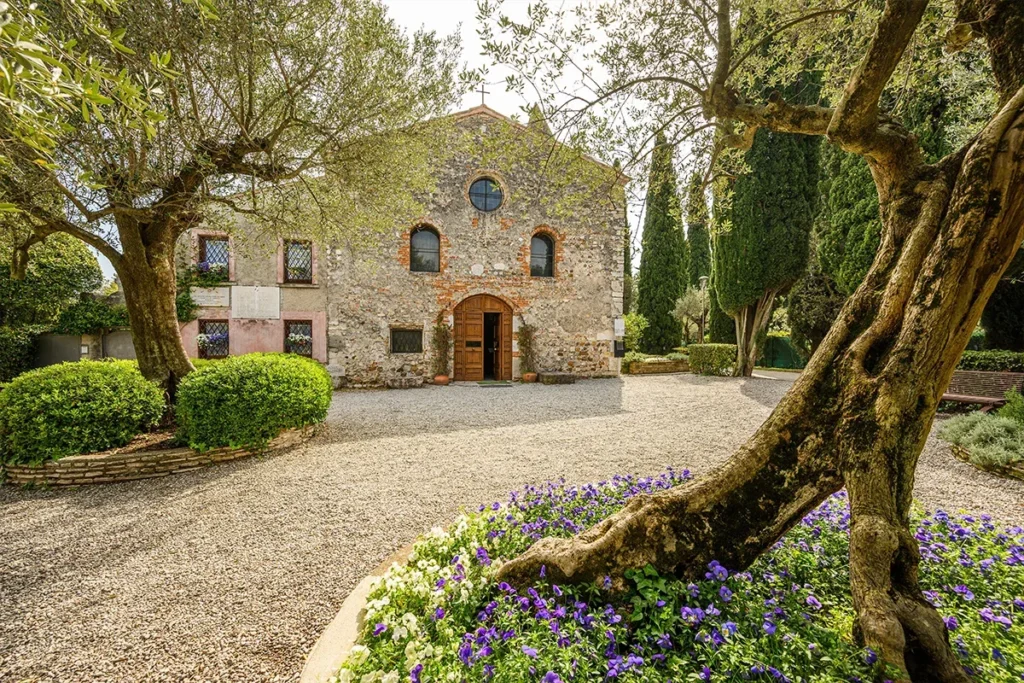
In the heart of Sirmione, the Church of San Pietro in Mavino is a little-known gem that’s well worth a visit. This beautiful Romanesque church dates back to the 12th century, and it’s a great example of medieval architecture.
The church is located on the small peninsula, surrounded by water on three sides. Inside, the church is adorned with frescoes and paintings that depict scenes from the Bible. The most notable frescoes are found in the nave and apse of the church. The nave is decorated with scenes from the life of Christ, while the apse features a magnificent depiction of the Last Judgment.
In addition to the frescoes, the church also boasts several other notable works of art, including a carved wooden crucifix and a marble baptismal font. These pieces add to the overall beauty and historical significance of San Pietro in Mavino.
5. Cà dei frati: a wine tour
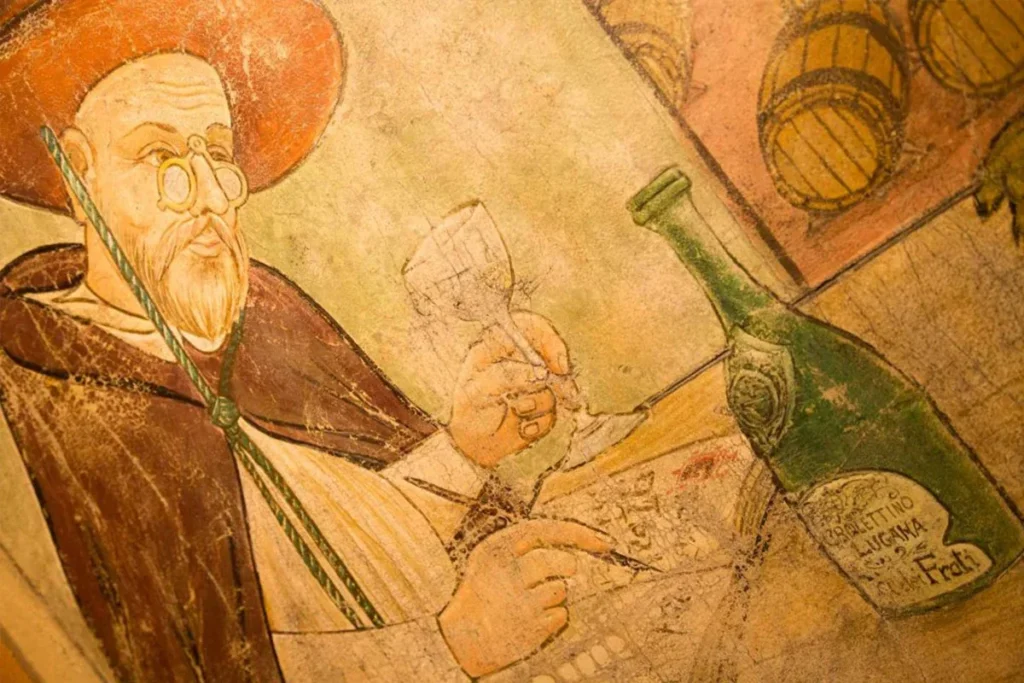
Ca’ dei Frati is a name that wine enthusiasts around the world recognize. The winery has been producing high-quality wines since the 13th century, and its reputation for excellence has only grown over the years. The vineyards are located on the hills overlooking Lake Garda, and the grapes benefit from the region’s unique climate and soil conditions.
You can take a guided tour of the winery, learn about the winemaking process, and sample some of the best wines in the region. And if you’re in the mood, you can even participate in a wine-making class.
It’s also a beautiful place to relax and enjoy the scenery. The winery has a charming courtyard where you can enjoy a glass of wine and forget all of your worries. And if you’re feeling hungry, you can even enjoy a delicious meal at the winery’s restaurant.
Sirmione’s Beaches
Sirmione offers a variety of beaches that cater to different preferences. While some beaches have facilities like sunbeds and umbrellas, it’s always a good idea to bring your own essentials, such as towels, sunscreen, and a hat. Remember: during peak season, some beaches can get a bit crowded.
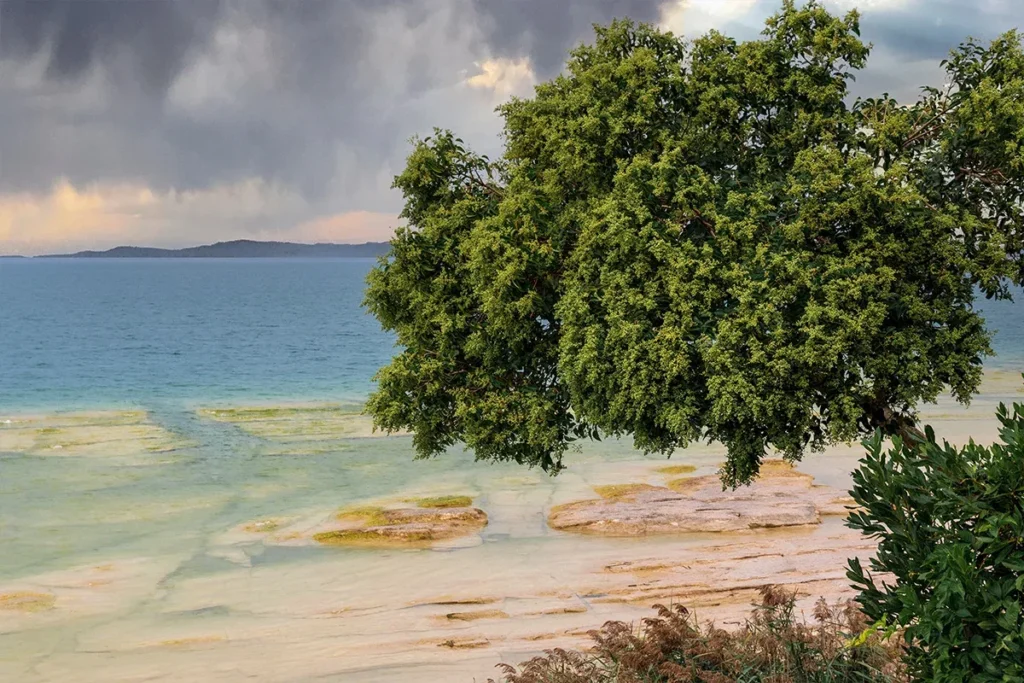
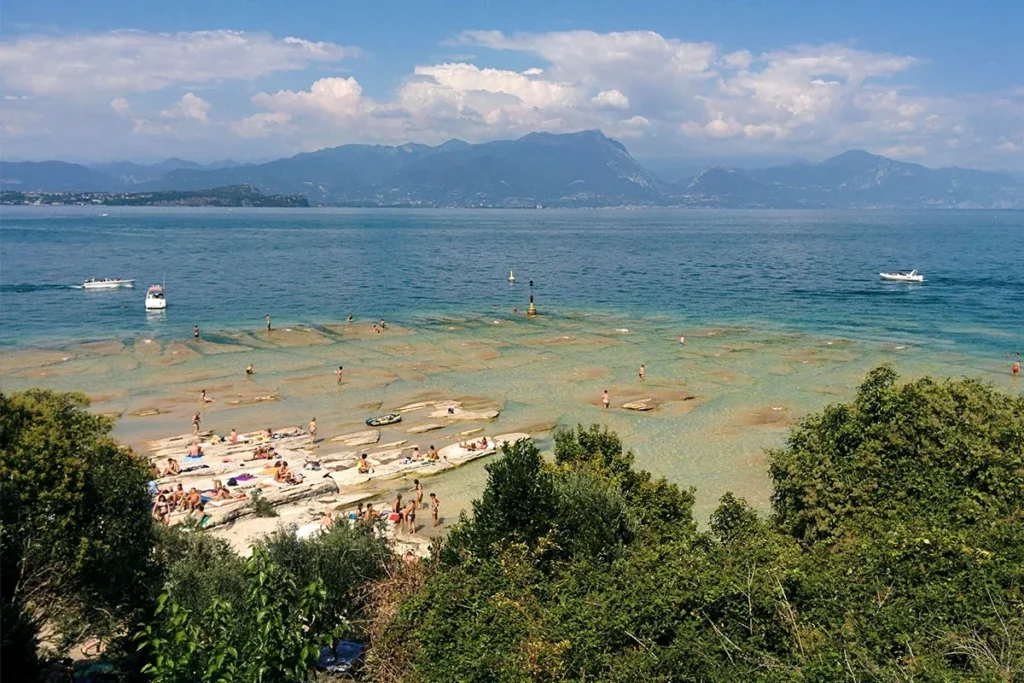
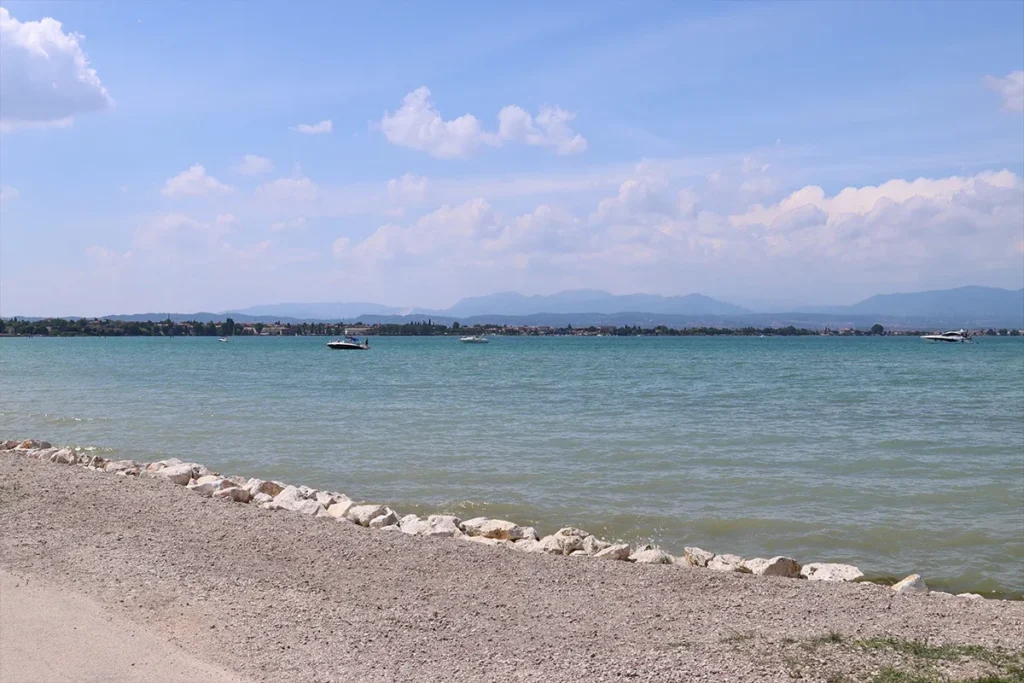
Jamaica Beach
Jamaica Beach is not the easiest beach to get to, but the effort is definitely worth it. The hike down to the beach is a bit steep, but once you get there, you’ll be rewarded with a sense of peace and tranquility. The beach itself is a mix of rocks and sand, but there are plenty of spots to find a comfortable place to sunbathe or swim. The water is crystal clear. There are a few sunbeds and umbrellas available for rent, but it’s mostly a natural, unspoiled environment.
Lido delle Bionde Beach
Lido delle Bionde is a spacious beach with soft, sandy shores, making it the perfect spot for building sandcastles and sunbathing. The beach has plenty of amenities to keep everyone entertained. There’s a playground for the kids, a volleyball court for the sporty types, and even a beach bar where you can grab a snack or a refreshing drink. Furthermore the place is clean and well-maintained, and the water is crystal clear and perfect for swimming.
Lido di Lugana Beach
This ‘Lido’ is a small beach located in the southern part of Sirmione, and it’s the perfect place to relax and unwind. As for the terrain it has a mix of sand and pebbles. There are plenty of places to rent sunbeds and umbrellas if you want to spend the day lounging in the sun. Lido di Lugana has a laid-back atmosphere. It’s not as crowded as other spots in Sirmione, so you can really enjoy the tranquillity.
Punta Gro Beach
Punta Gro is like the unassuming storyteller in your group, quietly holding the most fascinating tales. It’s a small peninsula tucked away in the southernmost part of Sirmione. The beach at Punta Gro is made up of small pebbles, and the water is crystal clear. Punta Gro isn’t just about the beach. It’s also a great place to explore. There are hiking trails that wind through the woods and reach the top of the hill.
Key Highlights:
- Jamaica Beach: rocky shoreline, crystal-clear waters, and stunning views.
- Lido delle Bionde Beach: family-friendly, spacious sandy, nearby amenities.
- Lido di Lugana Beach: tranquil setting, sandy and pebbly areas, relaxation.
- Punta Gro Beach: secluded, peaceful atmosphere, and stunning lake views.
Sirmione’s beaches offer a diverse range of experiences, from secluded coves to lively family-friendly spots. Obviously summer is the peak season, with warm weather and long days. However, Sirmione is also charming in spring and autumn when the crowds are smaller.












